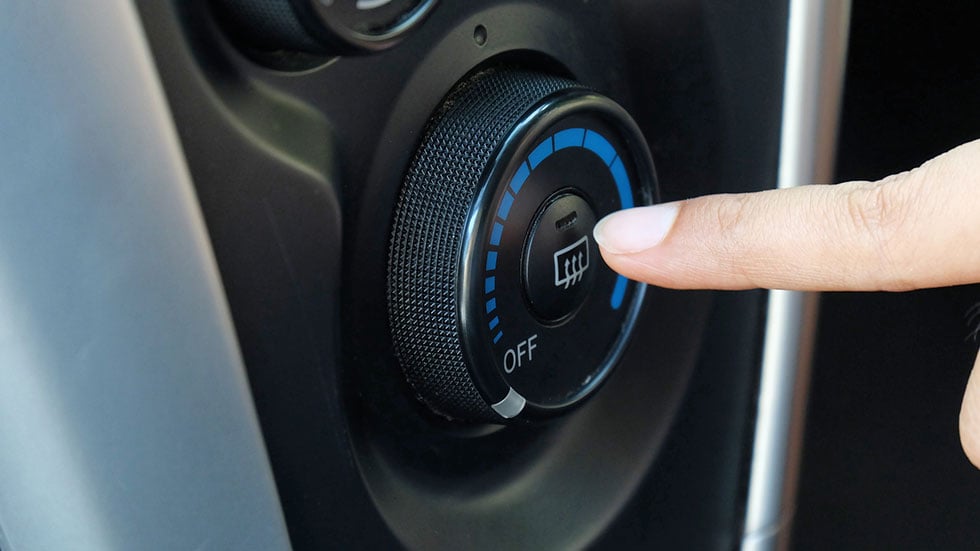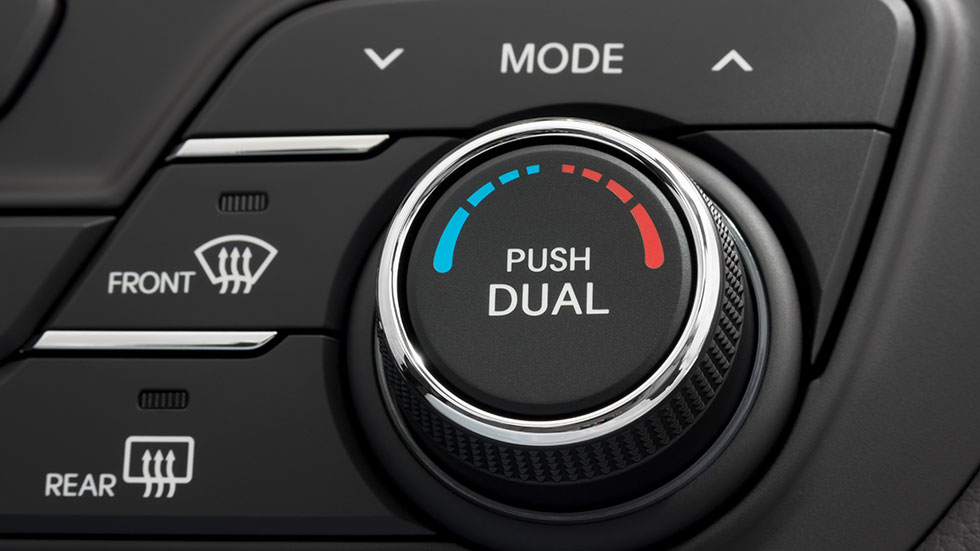The Best Ways To Defog Your Vehicle’s Windows
Steer clear in any seat of the car


Drivers in both the dead heat of summer and frigid chills of winter are familiar with fog or condensation on their windshields. Not only is fog an inconvenience—sometimes adding five or ten minutes to commutes while windows defog—but the obstructed vision they present can make it unsafe (or even illegal in some states) for drivers to operate their vehicles.
Fogged windows occur whenever the temperature of your windows contrasts greatly with the air around it. This contrast in temperatures means the moisture hanging in the air meets dewpoint (the point at which condensation occurs) and then collects as droplets on the inside or outside of your windows.
In this article, we'll review some tips and tricks you can implement to defog your windows faster on hot summer days or frosty winter mornings, saving you time on your commute and ensuring that you always hit the road safely, with a full field of view.

Summer heat
In areas with intense, unrelenting heat, when hot outside air meets the cool surface of vehicle glass that has been cooled by air conditioning or that has sat overnight, condensation will form on the outside of the glass. This isn't a problem for windshields as a simple swipe of the wiper will often clear the obstruction, however side windows and mirrors may need a quick wipe with a cloth to make them safe for vehicle operation. You can also try lowering the temp of your AC, directing the warmer, drier air onto glass surfaces. If it's not raining, also try rolling down windows to more quickly bring temps up to meet the warmth of outside air and reduce fogging.

Winter chill
Winter fog, on the other hand, forms on the inside of windshields and windows due to the warm, humid air lingering in vehicles as frigid winter temps cool the glass from outside. While drivers can wipe away this fog as a quick solution, this will likely leave annoying streaks and may be a process drivers need to repeat multiple times before their vehicle warms up and eliminates fogging on its own. To defog glass more quickly from the inside, put your AC on full heat and direct the air as fully as possible onto your glass surfaces. As the air from your heater warms up, this air will be able to remove and evaporate more of the moisture collected on your glass, clearing your view. Also try turning off the air recirculation mode (the button with a car and a curved arrow inside it). This will pull dry air in from outside your vehicle instead of recirculating the humid air trapped inside.

Preventing fog altogether
If you'd rather avoid the hassle of fog altogether, there are plenty of relatively cheap products available that can ensure you won't have to deal with fogged windows on a busy morning ever again. We've listed a few below along with the steps you'll need to take to use them properly.
Microfiber cloth
Microfiber cloths are a perfect, reusable solution for several automotive applications, but their soft woven surfaces make them an ideal cleaner and buffer for your windows. Available in several different weaves, we like waffle weave the best.
Glass cleaner
Start with a high-quality, ammonia-free glass cleaner like Armor All or Shine Society’s +vIS product. While ammonia is safe to use on auto glass, it can damage window tints and evaporates more rapidly when applied in the sun, making it more likely to leave annoying streaks. If grease and grime persist, you can also follow up with an isopropyl alcohol cleaner like Mothers or GYEON to fully degrease and prep surfaces for the antifog application.
Antifog application
Once your glass is clean and dry, apply an antifog spray like Rain-X or WeatherTech. You can either spray directly on glass or apply to a towel, wiping vertically and horizontally in a crosshatch pattern. It's important for you to let the application cure for 2-4 minutes before buffing the finish with a clean, dry microfiber towel.
Exterior fog prevention
A number of companies, most notably Rain-X, make sprays or car wash soap you can apply to the outside of your vehicle causing water to bead up and run off more easily. When applied regularly, this will also help prevent your exterior glass from fogging during hot summer months.
